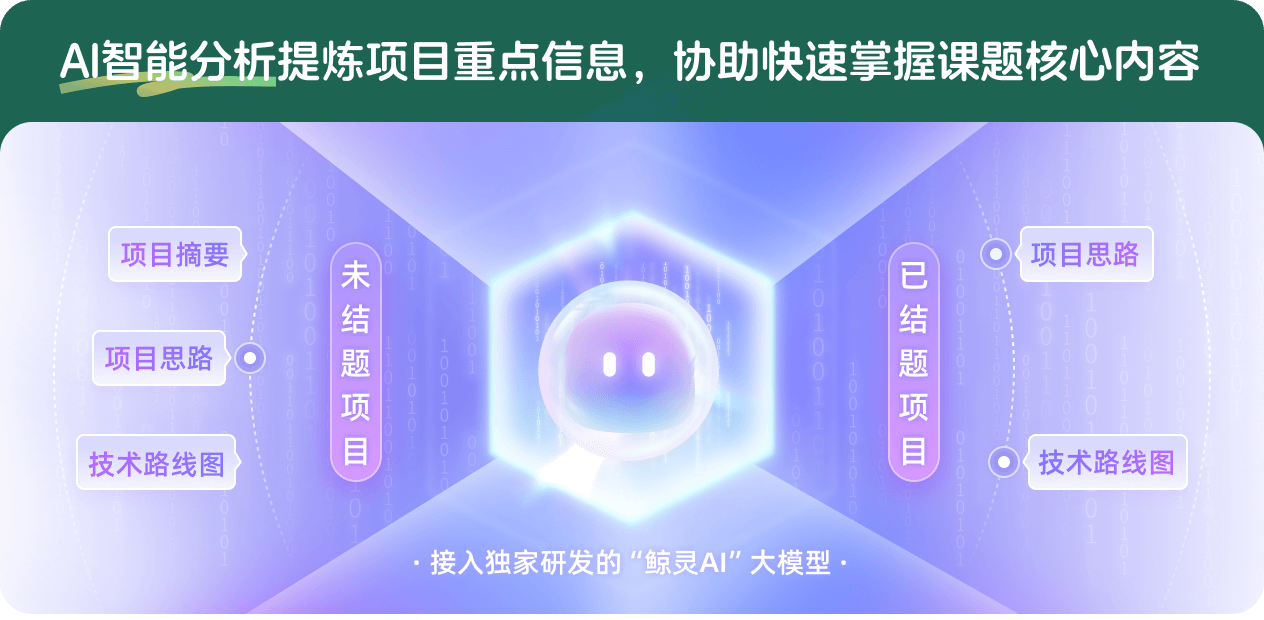纳米材料促进细菌耐药基因水平转移及机理研究
项目介绍
AI项目解读
基本信息
- 批准号:81202163
- 项目类别:青年科学基金项目
- 资助金额:24.0万
- 负责人:
- 依托单位:
- 学科分类:H3001.环境卫生
- 结题年份:2015
- 批准年份:2012
- 项目状态:已结题
- 起止时间:2013-01-01 至2015-12-31
- 项目参与者:邱志刚; 王新为; 张斌; 黄爱华; 杨栋; 钱迪; 付佳伦;
- 关键词:
项目摘要
Recently, the potential risks of nanomaterials and the spread of antibiotic resistance have become two major worldwide public concerns, because more and more kinds and amounts of nano-materials are being released into the enviroment in the process of prodution and application, and an increasing number of super-resistant bacteria have appeared and threat to people's lives and health seriously. However, it is still unknown whether or how nano-materials is able to affect the antibiotic resistance transfer between bacteria. After we have successfully completed the last National Natural Science Foundation, we found that nano-materials could promote the multiresistance genes horizontal transfer by conjugation. Based on the results of our previous studies, we hypothesised that nano-materials in water may promote the horizontal transfer of multidrug-resistant genes between bacteria by transformation and transduction. And this study is to verify this hypothesis. The main research contents include: to confirm the effect and the law of nano-materials in water on the horizontal transfer of resistace genes by transformation and transduction; to explored the mechanisms of nano-alumina promoting the horizontal transfer of resistance genes on cellular and molecular level by morphological, biochemical, and molecular biological methods, such as: fluorescent tracing technique, atomic force microscopy, fluorescence confocal microscopy, transmission electron microscopy, real-time quantitative PCR, proteomics technology, and so on. This project will not only open up a new field of study on the environmental safety of nanomaterials, but also further enrich our knowledge about the the transfer of resistance genes. The results of our studies will help us to control the generation of drug resistance bacteria, to lay theoretical and technical foundation for us to in-depth study the potential risks of nanomaterials and provide us an guidline of nano-materials production and security applications.
纳米材料安全性和细菌耐药性扩散是全世界关注的两大科学问题,但是由于纳米材料的生产及应用释放到水环境中的纳米材料对大量存在于水环境中的耐药细菌的影响尚未引起人们重视。我们在上一个国家基金资助下率先发现纳米材料能够促进细菌耐药基因以接合转移的方式进行转移,在此基础上进一步提出了"纳米材料促进细菌耐药基因以转化和转导方式水平转移"的假说并通过以下研究内容进行验证:观察不同纳米材料对细菌耐药基因转化与转导的作用及规律;应用荧光示踪技术、原子力显微镜、荧光共聚焦显微镜、透射电镜等细胞生物学研究手段以及实时荧光定量PCR等分子生物学技术,从细胞和分子水平阐明纳米粒子促进细菌耐药基因以转化和转导方式水平转移的机制。本项目不仅开辟纳米材料环境安全研究的新领域,而且将进一步丰富细菌耐药性转移的科学知识,为控制细菌耐药性的产生及深入研究纳米材料的环境安全奠定理论与技术基础,为纳米材料的生产及安全应用提供指导。
结项摘要
纳米材料安全性和细菌耐药性扩散是全世界关注的两大科学问题,但是由于纳米材料的生产及应用释放到水环境中的纳米材料对大量存在于水环境中的耐药细菌的影响尚未引起人们重视。我们在上一个国家基金资助下率先发现纳米材料能够促进细菌耐药基因以接合转移的方式进行转移,在此基础上进一步提出了“纳米材料促进细菌耐药基因以转化和转导方式水平转移”的假说,研究纳米材料在促进耐药基因通过转化和转导方式进入细菌细胞的过程规律,从细胞和分子水平阐明纳米粒子促进细菌耐药基因以转化和转导方式水平转移的机制。.本研究在实验室中建立了纳米材料作用下游离耐药基因转入细菌细胞的模型(转化和转导模型),并研究了纳米材料在游离耐药基因重新进入菌体细胞的作用。研究发现多种纳米材料均能促进不同尺寸携带耐药基因的游离质粒重新进入大肠杆菌等革兰氏阴性菌和金黄色葡萄球等革兰氏阳性菌,而且能够获得高达7.4×106个转化子/100ng 质粒。这一结果证实了水环境中的纳米材料能够高效率的使游离耐药基因重新回到菌体细胞,造成耐药基因的二次扩散。建立实验数学模型分析转化转导方式在耐药基因水平转移中的比重关系发现转化率随着时间的延长在增大,转导率随着时间的延长先增大后减小。.纳米材料协助游离耐药基因进入菌体细胞的机制研究表明水环境中的纳米材料能否吸附游离(胞外)的耐药基因,保护其不被酶消解;纳米材料能够物理损伤细菌细胞膜,使细菌细胞膜上形成孔洞,游离耐药基因或是纳米材料载带着耐药基因通过孔洞进入细胞内,纳米材料产生的ROS维持了细菌细胞膜上孔洞的存在,使耐药基因进入细菌细胞内提供了机会。同时纳米材料对与细胞膜以及跨膜转运蛋白相关的调控基因产生影响,造成了耐药基因的高效率进入菌体细胞。.本项目的研究结果进一步丰富了细菌耐药性转移的科学知识,为控制细菌耐药性的产生及深入研究纳米材料的环境安全奠定理论与技术基础,为纳米材料的生产及安全应用提供指导。
项目成果
期刊论文数量(5)
专著数量(0)
科研奖励数量(0)
会议论文数量(4)
专利数量(0)
纳米二氧化钛对多药耐药质粒RP4接合转移的影响
- DOI:--
- 发表时间:2013
- 期刊:军事医学
- 影响因子:--
- 作者:陈照立;金敏;邱志刚;李君文
- 通讯作者:李君文
数据更新时间:{{ journalArticles.updateTime }}
{{
item.title }}
{{ item.translation_title }}
- DOI:{{ item.doi || "--"}}
- 发表时间:{{ item.publish_year || "--" }}
- 期刊:{{ item.journal_name }}
- 影响因子:{{ item.factor || "--"}}
- 作者:{{ item.authors }}
- 通讯作者:{{ item.author }}
数据更新时间:{{ journalArticles.updateTime }}
{{ item.title }}
- 作者:{{ item.authors }}
数据更新时间:{{ monograph.updateTime }}
{{ item.title }}
- 作者:{{ item.authors }}
数据更新时间:{{ sciAawards.updateTime }}
{{ item.title }}
- 作者:{{ item.authors }}
数据更新时间:{{ conferencePapers.updateTime }}
{{ item.title }}
- 作者:{{ item.authors }}
数据更新时间:{{ patent.updateTime }}
其他文献
好氧颗粒污泥形成过程中微生物群落结构的演变与分析
- DOI:--
- 发表时间:--
- 期刊:环境工程学报
- 影响因子:--
- 作者:张斌;邱志刚;金敏;陈照立;谌志强;王景峰;李君文
- 通讯作者:李君文
荧光定量RT - PCR 检测诺如病毒基因Ⅱ型方法的建立和评估.
- DOI:--
- 发表时间:2013
- 期刊:解放军预防医学杂志
- 影响因子:--
- 作者:夏体娇;金敏;陈照立;王景峰;谌志强;邱志刚;李君文
- 通讯作者:李君文
天津某小区生活饮用水中胞外耐药基因污染分析
- DOI:--
- 发表时间:2017
- 期刊:军事医学
- 影响因子:--
- 作者:刘珊珊;侯爱明;张坤明;杨栋;刘伟丽;邱志刚;谌志强;曲红梅;李君文;金敏
- 通讯作者:金敏
镉对小鼠骨髓造血干细胞线粒体功能的影响
- DOI:10.7644/j.issn.1674-9960.2018.02.004
- 发表时间:2018
- 期刊:军事医学
- 影响因子:--
- 作者:胡辉;刘伟丽;张雪莲;周坤;杨栋;谌志强;邱志刚;金敏;陈照立;李君文
- 通讯作者:李君文
肝癌患者单个核细胞线粒体DNA拷贝数与抗氧化能力的变化
- DOI:10.13459/j.cnki.cjap.2016.01.001
- 发表时间:2016
- 期刊:中国应用生理学杂志
- 影响因子:--
- 作者:高园;聂鸿靖;杨栋;丁诚实;金敏;谌志强;邱志刚;郭旋;陈照立;李君文
- 通讯作者:李君文
其他文献
{{
item.title }}
{{ item.translation_title }}
- DOI:{{ item.doi || "--" }}
- 发表时间:{{ item.publish_year || "--"}}
- 期刊:{{ item.journal_name }}
- 影响因子:{{ item.factor || "--" }}
- 作者:{{ item.authors }}
- 通讯作者:{{ item.author }}

内容获取失败,请点击重试

查看分析示例
此项目为已结题,我已根据课题信息分析并撰写以下内容,帮您拓宽课题思路:
AI项目摘要
AI项目思路
AI技术路线图

请为本次AI项目解读的内容对您的实用性打分
非常不实用
非常实用
1
2
3
4
5
6
7
8
9
10
您认为此功能如何分析更能满足您的需求,请填写您的反馈:
邱志刚的其他基金
环境雌激素污染物影响信息素调控的耐药基因接合转移规律和机制
- 批准号:42177414
- 批准年份:2021
- 资助金额:57 万元
- 项目类别:面上项目
纳米材料抗菌过程中诱导多重抗生素耐受细菌形成及机制研究
- 批准号:31470234
- 批准年份:2014
- 资助金额:84.0 万元
- 项目类别:面上项目
相似国自然基金
{{ item.name }}
- 批准号:{{ item.ratify_no }}
- 批准年份:{{ item.approval_year }}
- 资助金额:{{ item.support_num }}
- 项目类别:{{ item.project_type }}
相似海外基金
{{
item.name }}
{{ item.translate_name }}
- 批准号:{{ item.ratify_no }}
- 财政年份:{{ item.approval_year }}
- 资助金额:{{ item.support_num }}
- 项目类别:{{ item.project_type }}




















